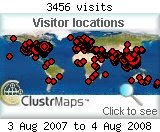Sulu marks today the launching of its Provincial Ordinance Number 01-2008, otherwise known as “An Ordinance Providing for the Sulu Reproductive Health Code of 2008.”
Ms. Florence Tayzon, UNFPA Assistant Country Representative, who was its guest of honor said “we are happy that finally Sulu had embraced Reproductive Health and the RH code is the living testimony to this.”
The gathering celebrates the first provincial RH ordinance to be passed not only in the Autonomous Region for Muslim Mindanao (ARMM), but also in the entire Mindanao region said Tayson.
While there are already a good number of municipal and city governments in Mindanao that have successfully passed RH ordinances, it remains a challenge among provincial governments.
“It is UNFPA’s hope that more provincial governments in Mindanao will follow the example of Sulu Province ,” Tayson said.
UNFPA has three major projects in the country Reproductive Health, Population Development Strategies and Gender which all the programs were embodied in the Sulu RH Code.
The UN project is currently working in on ten (10) provinces in the country, namely; Ifugao, Mountain Province , Bohol, Eastern Samar, Masbate , Sultan Kudarat, Maguindanao, Lanao Sur, Sulu and Tawi-Tawi.
This is UNFPA’s first visit to Sulu since the program has started in 2005, but because Sulu has always been tainted with conflict, UN security assessment prevented UN workers to visit Sulu.
Ms Tayson said “that our coming here today is an indication that peace is changing and improving”.
Sulu Vice Gov Nurana Sahidulla said “the ordinance aimed at addressing the various reproductive health concerns of the province of Sulu, including but not limited to, high population growth rate (3.15%), high maternal deaths (102 deaths recorded in 2006 due to complications related to pregnancy and childbirth), high infant mortality rate (64 infants below 12 months died out of 11,824 live births), high unmeet need for family planning, unavailability of FP commodities, rising STI cases, and rising violence against women and children (VAWC) cases (89 reported cases in 2006).
The briefing made by Vice Gov Sahidulla to the UN representative aim to make clear the certain need for improved access to contraceptives and other reproductive health supplies in order to help break the cycle of poverty and early deaths of mothers and children.
Services to be offered included in the Code are, adolescent reproductive health (51% of Sulu population are 19 years old and below), PAP Smear for women, digital rectum examination for men, RH Counseling Service, STI and HIV/AIDS screening, women and children protection unit in the Provincial Hospital, family planning programs, comprehensive communication plan for intensified information drive, and establishment of birthing homes and basic emergency maternity and obstetric care health facilities.
Funds for these services shall be earmarked annually from the Provincial GAD Fund (5% of the total GAD fund).
Sulu is one of the ten poorest provinces in the country. In 2000, more than two-thirds of its population is below the poverty threshold (67.7%). Aside from chronic poverty, the province is also wracked by violent conflicts, more recent of which were the series of kidnappings and hostage-taking activities by the Abu Sayaf group. It has been the hotbed of the secessionist movements since the 1970s.
The effect of armed conflict in the province manifests in its mortality pattern. The top 10 causes of mortality in Sulu include legal intervention by firearms, hypertension, diarrhea disease, pneumonia, myocardial infarction, pulmonary tuberculosis, malnutrition, accidents/injury, cancer, and malaria.
IPHO Chief Dra. Farah Tan Omar said Legal intervention by firearms is the top cause of mortality in males while hypertension is the leading cause of mortality in females. On the other hand, the top 10 causes of morbidity include upper respiratory tract infection, skin disease (infection), diarrheal disease, malaria, influenza, pneumonia, parasitism, hypertensive disease, bronchitis/bronchiolitis, and mucus-related disease.
Ms. Florence Tayzon, UNFPA Assistant Country Representative, who was its guest of honor said “we are happy that finally Sulu had embraced Reproductive Health and the RH code is the living testimony to this.”
The gathering celebrates the first provincial RH ordinance to be passed not only in the Autonomous Region for Muslim Mindanao (ARMM), but also in the entire Mindanao region said Tayson.
While there are already a good number of municipal and city governments in Mindanao that have successfully passed RH ordinances, it remains a challenge among provincial governments.
“It is UNFPA’s hope that more provincial governments in Mindanao will follow the example of Sulu Province ,” Tayson said.
UNFPA has three major projects in the country Reproductive Health, Population Development Strategies and Gender which all the programs were embodied in the Sulu RH Code.
The UN project is currently working in on ten (10) provinces in the country, namely; Ifugao, Mountain Province , Bohol, Eastern Samar, Masbate , Sultan Kudarat, Maguindanao, Lanao Sur, Sulu and Tawi-Tawi.
This is UNFPA’s first visit to Sulu since the program has started in 2005, but because Sulu has always been tainted with conflict, UN security assessment prevented UN workers to visit Sulu.
Ms Tayson said “that our coming here today is an indication that peace is changing and improving”.
Sulu Vice Gov Nurana Sahidulla said “the ordinance aimed at addressing the various reproductive health concerns of the province of Sulu, including but not limited to, high population growth rate (3.15%), high maternal deaths (102 deaths recorded in 2006 due to complications related to pregnancy and childbirth), high infant mortality rate (64 infants below 12 months died out of 11,824 live births), high unmeet need for family planning, unavailability of FP commodities, rising STI cases, and rising violence against women and children (VAWC) cases (89 reported cases in 2006).
The briefing made by Vice Gov Sahidulla to the UN representative aim to make clear the certain need for improved access to contraceptives and other reproductive health supplies in order to help break the cycle of poverty and early deaths of mothers and children.
Services to be offered included in the Code are, adolescent reproductive health (51% of Sulu population are 19 years old and below), PAP Smear for women, digital rectum examination for men, RH Counseling Service, STI and HIV/AIDS screening, women and children protection unit in the Provincial Hospital, family planning programs, comprehensive communication plan for intensified information drive, and establishment of birthing homes and basic emergency maternity and obstetric care health facilities.
Funds for these services shall be earmarked annually from the Provincial GAD Fund (5% of the total GAD fund).
Sulu is one of the ten poorest provinces in the country. In 2000, more than two-thirds of its population is below the poverty threshold (67.7%). Aside from chronic poverty, the province is also wracked by violent conflicts, more recent of which were the series of kidnappings and hostage-taking activities by the Abu Sayaf group. It has been the hotbed of the secessionist movements since the 1970s.
The effect of armed conflict in the province manifests in its mortality pattern. The top 10 causes of mortality in Sulu include legal intervention by firearms, hypertension, diarrhea disease, pneumonia, myocardial infarction, pulmonary tuberculosis, malnutrition, accidents/injury, cancer, and malaria.
IPHO Chief Dra. Farah Tan Omar said Legal intervention by firearms is the top cause of mortality in males while hypertension is the leading cause of mortality in females. On the other hand, the top 10 causes of morbidity include upper respiratory tract infection, skin disease (infection), diarrheal disease, malaria, influenza, pneumonia, parasitism, hypertensive disease, bronchitis/bronchiolitis, and mucus-related disease.













0 comments:
Post a Comment